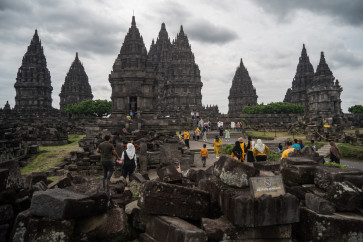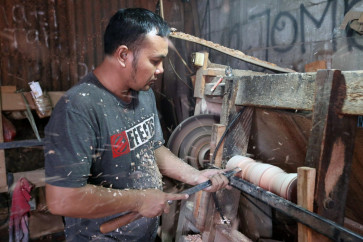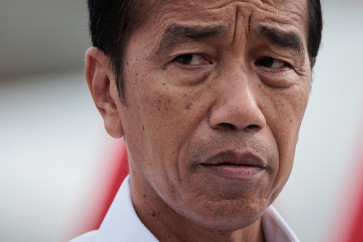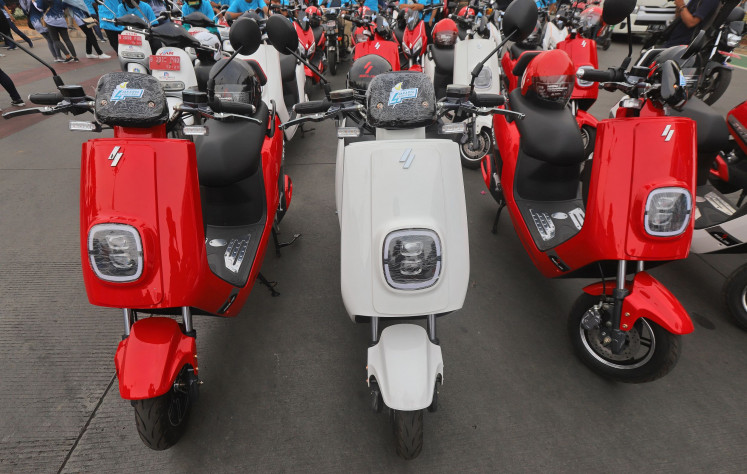Dig up knowledge of bamboo for healing
The use of modern medicines and pharmaceuticals has spoiled humans to the extent of decreasing knowledge of ancestral traditional medicines
Change text size
Gift Premium Articles
to Anyone

T
he use of modern medicines and pharmaceuticals has spoiled humans to the extent of decreasing knowledge of ancestral traditional medicines. Even though people are interested in 'back to nature' trends, prices of medicines in Indonesia are increasing and there is dependence on imported medicines.
Therefore, a development plan from 2015 to 2019 in Indonesia partly focused on using medicinal plants and wild species that have been traditionally cultivated was initiated. One potential alternative medicine material is bamboo.
Bamboo is well known, as it grows from lowland to highland. Its uses in construction, for handicrafts and household utensils, as well as its conservation of water and soil are well known by many, but its utilization as medicine is less known.
In previous times the shoots of yellow bamboo or bambusa vulgaris were used to heal liver problems. Balinese ancestors used the water as a medicinal eyewash and for tuberculosis. Gigantochloa apus (bambu tali) was used to heal wounds and for rheumatism and impotency.
The Hindu society in Bali utilized bamboo for cutting the umbilical cord, for household handicrafts, agricultural tools, building materials and in ngaben (ceremonies for the dead). However, although Balinese ancestors used bamboo, its use in medicine was not widely known.
Some indigenous knowledge of bamboo was found in lontar usada (ancient Balinese scripts written on palm leaves and describing forms of healing, medicinal ingredients and methods in traditional medicine). Nine species used for medicine have been found through an ethnobotanical study.
The nine species of bamboo and their medicinal uses included: shoots of Dendrocalamus asper (bambu petung), used to reduce hypertension; shoots of Gigantochloa nigrociliata (bambu tabah), used to relax muscles and for heartburn; roots of Gigantochloa aya (jajang aya), reduce fever; culms of bambusa vulgaris var. vulgaris (bambu ampel gadang), to cure liver problems; and shoots of Schizostachyum lima (buluh lengis), used to increase memory.
Also included were: shoots of Bambusa vulgaris var. stricta (bambu ampel gading), to cure liver problems; roots of Schizostachyum brachycladum (bambu tamblang gading), to improve mother's milk; culms of Gigantochloa hasskarliana (bambu pingit), used to cure breast cancer and insomnia; and roots and culms of Gigantochloa apus (bambu tali), used to cure diabetes and for skin rejuvenation.
Locals usually refer to a balian usada (traditional medical practitioner) knowledgeable on such plant uses.
The nine species of bamboo alone, traditionally used for medicine, reflect the nation's great biological diversity, second in the world only to Brazil.
We need to learn the indigenous knowledge in every region about utilization of bamboo for medicine, among other plants.
Even for the same species, the parts used and the preparation and application methods are not the same in every region, depending upon local wisdom and customs.
Considering the diversity of bamboo, discovering its use in medicine could be valuable, not only in Bali, and many scientists could take a role in this. Bamboo could become an industry worth billions of dollars in the medicinal world, because of its rapid productivity and ease of cultivation in many environments.
______________
The writer is a researcher in ethnobotany at the Bali Botanical Gardens, Indonesian Institute of Sciences (LIPI).









